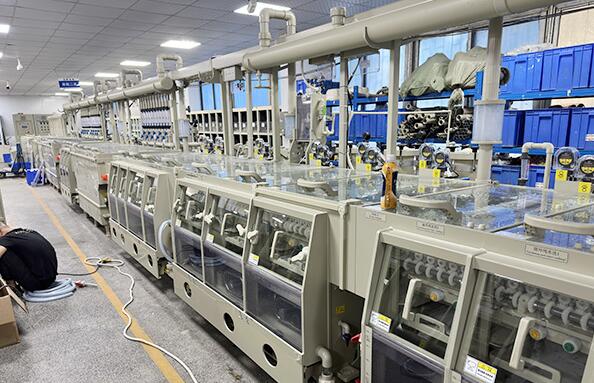Printed Circuit Boards (PCBs) are essential elements found in nearly all electronic devices, ranging from smartphones to industrial equipment. Among the various processes involved in PCB manufacturing, plating stands out, as it entails applying a thin metallic layer to the board's surface. PCB plating is crucial for safeguarding the board, enhancing its overall performance, and ensuring that electronic components remain operational over time. This article delves into what PCB plating is, its objectives, the different plating methods utilized, and its significance in the realm of PCB manufacturing.

The primary objective of PCB plating is to shield the copper traces found on the board. Although copper is an excellent electrical conductor, it is vulnerable to oxidation and corrosion, which can detrimentally affect the board's performance. By depositing a metallic layer atop the copper, plating serves to inhibit oxidation and preserves the PCB's structural integrity.
Furthermore, plating substantially enhances the durability and lifespan of the PCB. Given that PCBs often encounter fluctuating environmental factors such as humidity, heat, and vibration, the plating process boosts the board's ability to withstand wear, prolonging the electronic device's functionality.
A vital aspect of PCB plating is its provision of a smooth and reliable surface for soldering components. A well-plated surface guarantees the secure attachment of components to the PCB, minimizing the likelihood of defects or unreliable connections, particularly in high-frequency or high-performance circuits.
To achieve effective PCB plating, several processes are employed, each offering unique advantages suited to specific applications. Some of the most prevalent types of PCB plating include:
1. Electroplating (Electrolytic Plating)
Electroplating is the most common method utilized for PCB plating. This technique involves depositing a thin layer of metal onto the copper surface through electric current application. It excels in creating uniform coatings and is frequently used to plate metals such as gold, silver, nickel, and copper.
Electroplating can cover the entire PCB surface or target specific areas, such as vias (small openings used for interconnecting different PCB layers). This application method ensures excellent adhesion and produces a smooth surface crucial for high-performance applications.
2. Immersion Plating (Immersion Silver, Immersion Gold)
Immersion plating serves as a popular method for finishing PCBs, particularly for surface treatments. This technique entails submerging the PCB in a solution rich in metal salts, causing a thin metal layer to adhere to the copper surface. Immersion plating typically finishes the outer layers of PCBs, employing gold or silver layers to enhance solderability and resist corrosion.
In high-frequency or high-speed applications, where low electrical resistance is paramount, immersion gold and immersion silver finishes are preferred. These coatings yield a smooth, durable surface that guarantees dependable connections while minimizing oxidation risks.
3. Hot Air Solder Leveling (HASL)
Hot Air Solder Leveling (HASL) is a widely adopted technique for PCB surface finishing, particularly among consumer electronics. In this approach, the PCB is immersed in a molten solder bath, where excess solder is removed using hot air, leaving a thin, even layer of solder on the board's surface. HASL offers good corrosion resistance and is relatively economical, making it a favored choice for mass-produced PCBs.
Nevertheless, HASL does have some limitations, especially concerning smaller components or high-density interconnects (HDI), due to the solder coating's thickness, which can affect solder joint reliability.
4. Electroless Plating
Electroless plating is a non-electrolytic method that forms a metal coating on the PCB surface through a chemical reaction without relying on electric current. This technique is commonly applied to coat the inner layers of a PCB or areas where electroplating cannot reach. Electroless copper plating is utilized to coat vias in multilayer PCBs, ensuring electrical conductivity across different layers.
This method is prized for its precision and uniformity, which are essential for manufacturing high-density PCBs utilized in advanced electronics like mobile phones, medical devices, and automobiles.
PCB plating holds significant importance due to various factors. It provides critical protection against oxidation and corrosion that can damage the PCB over time and cause circuit failure. Additionally, plating ensures reliable soldering outcomes, delivering a dependable surface for component attachment to the PCB—especially crucial in high-performance circuits.
Moreover, the plating process enhances the PCB's overall functionality by improving electrical conductivity and offering a smooth surface for assembly. For high-density PCBs, plating is vital in ensuring effective electrical connections among different board layers.
Being an integral element of the PCB manufacturing process, PCB plating must be executed with precision to guarantee a top-quality product. The process requires careful control to ensure that metal layers are evenly applied, the correct thickness is achieved, and surface finishes meet the necessary specifications based on the intended application.
Typically, plating follows other manufacturing steps such as etching and drilling and often combines various finishing techniques to meet the desired performance and aesthetic of the PCB.
In conclusion, PCB plating is essential for the durability, reliability, and performance of printed circuit boards. Whether applying electroplating, immersion plating, HASL, or electroless plating techniques, the procedure safeguards the copper surface from corrosion, offers a smooth soldering platform, and contributes to the PCB's functionality. When seeking high-quality PCB plating solutions, it’s vital to partner with a reliable supplier to ensure optimal results. For additional information on our PCB plating line and how it can fulfill your manufacturing requirements, please contact us.
119
0
0
All Comments (0)
Previous: Discover Hubei Yiyuan Industrial Trading Co., Ltd: Your Trusted Partner
Next: Why Choose Conveyor Connecting Clamps Over Alternatives?
If you are interested in sending in a Guest Blogger Submission,welcome to write for us!
Comments